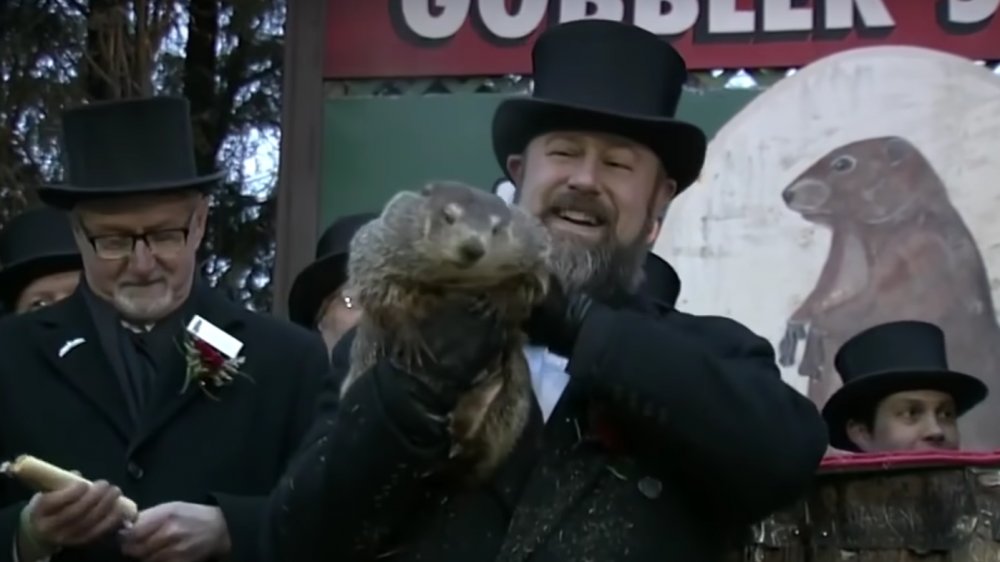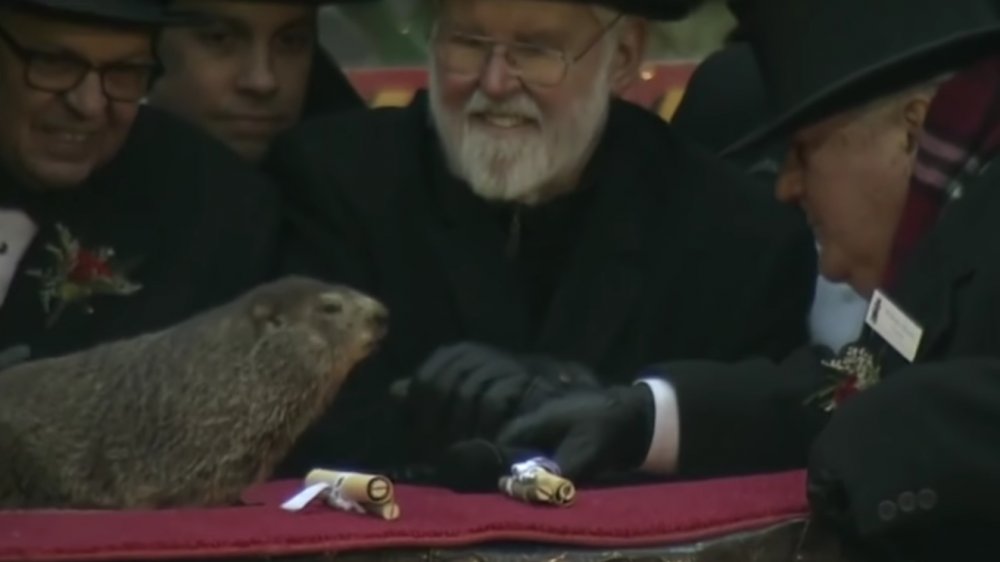The Untold Truth Of Groundhog Day
Have you ever felt like your life was so pointlessly repetitive that you felt tempted to punch a clock to death? Unfortunately, if you were seeking help with that, you should probably look to a therapist or a clock store to sort out your issues because this piece isn't about living in a Bill Murray movie.
Here you'll read (for the first time ever, no doubt), about the annual ritual of harassing an unsuspecting groundhog and pretending to know if the animal has found its shadow and wasn't just frantically searching for an escape route or a sign from groundhog Jesus that everything will be Okay. For humans it's all tall hats and laughter, except for when New York Mayor Bill de Blasio accidentally dropped a groundhog on the ground and it later died from internal injuries. So how did this whole thing start?
February 2nd verse same as the first
Groundhog Day falls on the second day of the second month of the year. Reader's Digest writes that the United States adopted the holiday in 1887, but its roots go back way farther in time. The tradition is partly inherited from the Pagan celebration of the midpoint between the shortest day of the year, winter solstice, and the spring equinox, when the day and night have the same duration. Their festival landed on the 1st or 2nd of February. In those days, the groundhog was a goddess named Cailleach who would make the day bright if she wanted a long winter and gloomy if spring would pop up earlier.
In the Middle Ages, Christians co-opted the celebration, converting it to Candlemas, which would have marked the first day when the mother of Jesus was allowed to present the baby the holy temple in Jerusalem, per History. Why not earlier? After Mary gave birth to the immaculately conceived Jesus, she was deemed unclean and barred from entering the temple for 40 days. Echoing the Pagan tradition, a sunny Candlemas was considered a harbinger of a longer winter.
This religious tradition evolved into predicting the weather based on whether hibernating animals poked their head out of their hidey hole. The French had a connection to marmots, hedgehogs were England's cup of tea, and Germans chose to leave it to beavers for their forecasts. In 1887, the Pennsylvania Dutch adopted the German practice but replaced the beavers with the groundhog, Punxsutawney Phil. If he sees his shadow, it means a longer winter. And that's only wrong about 60 percent of the time.

